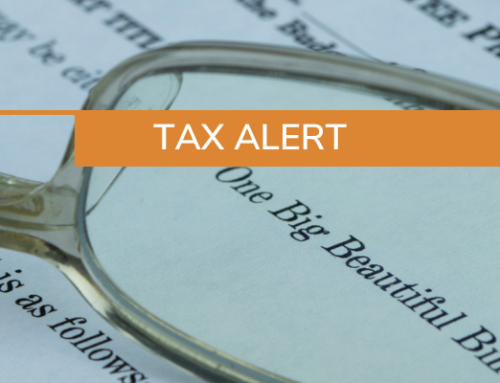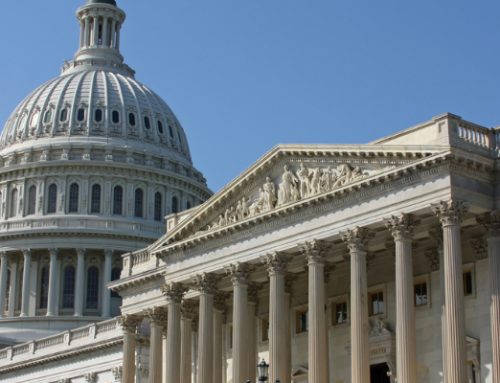On December 21, 2020, Congress unveiled agreement on a $900 billion coronavirus relief deal. The bill, which will be attached to an omnibus spending bill that funds the government, is expected to pass both the House and the Senate quickly and be signed into law by the President.
The bill has several business and individual provisions included – but what do they mean for you?
Business Provisions
Important Changes to PPP Loans
The bill makes a long-awaited change to the PPP program, making PPP funds truly tax-free to recipients, in line with Congressional intent. This change overrules an IRS interpretation that would have disallowed expenses, which would have had the same effect as if it had been taxable.
Other PPP changes include a simplified application process for loans under $150,000, flexibility in choosing a covered period, and removing the requirement to reduce PPP forgiveness by EIDL grants received.
A Second Round of PPP Loans
For businesses who have seen significant decreases in revenue in 2020 (drops of 25% as compared to the same quarter in the prior year), a second round of PPP loans will be available. Businesses will need to demonstrate their need to be eligible for the loans.
Like the previous round, these loans will allow for 2.5x average monthly payroll; however, 3.5x average monthly payroll will be allowed for restaurants and the hospitality industry. For this round of PPP, the maximum loan amount allowed is $2 million. Additionally, some 501(c)(6) organizations are now eligible to apply for PPP loans.
Changes to Meals & Entertainment
For 2021 and 2022, businesses may write off 100% of business meals, increased from the current 50% limit.
Extension and Expansion of Employee Retention Credit
The Employee Retention Credit has been extended and expanded. Businesses who meet the qualifications can now claim a credit of up 70% of qualifying wages up to $10,000 per employee per quarter; this is up from 50% per employee on $10,000 per year.
In addition, employers may use both the PPP and the ERC, as long as no wages paid for with forgiven PPP funds are included.
Qualifying has gotten a bit easier as well – revenues now need to show a 20% decline for the same calendar quarter in 2019 and large employers have been redefined as those with 500 or more employees (not 100).
Extension of Families First Coronavirus Act
The Families First Coronavirus Act provided benefits for employers with under 500 employees, allowing them to continue to pay employees if they were unable to work for a number of stated coronavirus situations. These benefits, set to expire on December 31, are extended through March 31, 2021.
Changes to HHS Provider Relief Funds
Congress has taken the definition of “lost revenue” out of the hands of HHS – a point of major controversy over the last several months from health care providers. The new definition allows “lost revenues” to be calculated based on the more favorable (June 2020) HHS guidance, including comparing budget to actual in some cases.
Economic Injury Disaster Loans (EIDLs)
The popular SBA program was given another $20 billion to support new EIDL grants. Additionally, the bill makes EIDL grants non-taxable to recipients.
Additional Business Relief Provided:
- Low Income Housing Tax Credit Enhancement – setting minimum credit rate to 4% and expansion for qualified disaster areas over the next two years
- Extension of SBA Loan Payments – the debt relief program provided for in the CARES Act has been expanded, providing additional debt relief for 7(a) Loans beginning February 2021
- Grants for Shuttered Live Venues – available for up to 45% of gross earned revenue in 2019
- 5 Year Extensions of Credits (to 2025) – Work Opportunity Tax Credit, New Markets Tax Credit, Employer Credit for Paid Family and Medical Leave
- Beer, Wine & Spirits Excise Tax – will not increase as planned on January 1. The decreased tax rate that has been in effect since 2018 will become permanent
- Child Care Stabilization Fund Grants – the bill provides $10 billion in funds to HHS to support a new fund to cover costs and increased operating expenses resulting from COVID-19
Individual Provisions
Individual Stimulus Payments/Recovery Rebates
Similar to the individual stimulus payments provided by CARES, individuals who qualify will receive $600 per person, including dependent children. Benefits begin to phase out for individuals who make more than $75,000, and joint married filers who make more than $150,000. The phase out will be 5% for the amount taxable income on the most recently filed tax return (2018 or 2019) exceeds these limits.
As with the previous version of these payments, these are advances on an individual 2020 tax credit.
Unemployment Insurance
The bill provides for additional unemployment benefits for jobless workers – extending the benefit period and providing additional payments of $300 per week for 11 weeks (down from the $600 per week provided by CARES, which expired in July). Benefits, including the extra $300 per week, are extended for self-employed and gig workers as well.
Rental Assistance and Eviction Moratorium
Congress is providing $25 billion in federal rental assistance to states and local governments to be used for assistance to eligible households in need. In addition the eviction moratorium is extended through January 31, 2021. While this may not seem like long, the incoming President could extend it via executive order once sworn into office.
Above-the-Line Charitable Contributions
The 2020 above-the-line deduction of up to $300 for those who make cash donations but do not itemize, will continue for one year, into 2021. In addition, this deduction is expanded to $600 for taxpayers who are married and file jointly.
Medical Changes
Included in the omnibus bill, is a provision that will end “surprise medical billing.” At the heart of this issue are bills patients receive after out-of-network care, often in emergency rooms. Once enacted, patients will only be responsible for in-network amounts due for emergencies or certain non-emergent situations where they cannot chose an in-network provider, unless the provider gives 72 hours’ notice and the patient consents.
In addition, the 10% AGI limit to begin deducting medical expenses will remain at the lower 7.5% permanently
Other Changes:
- Employee Payroll Tax Deferral – employees who had their social security tax deferred the final four months of 2020 were set to pay the amounts back during the first four months of 2021; instead, repayments will begin May 1, 2021 and finish on December 31, 2021.
- HSAs will have increased flexibility to roll amounts over to 2021 and 2022.
- Strengthening of the Earned Income Tax Credit and Child Tax Credit – for families who have seen reduced wages or unemployment in 2020, they may use their 2019 income in determining these credits.
- Changes in Education Benefits – the Lifetime Learning Credit has new income limits before phase-out and the Deduction for Qualified Tuition and Related Expenses is repealed, effective 2021.
Still have questions on how this may affect you? Contact a PBMares tax advisor today.
Don’t miss our upcoming webinar, COVID-19 Response and Relief: What It Means for You.
Click here to register for this live event.





